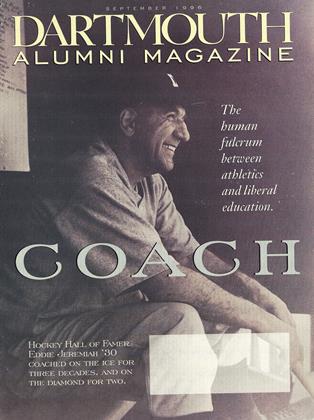From stats to stumps, Dartmouth's presidents usually get their way.
1770
President Eleazar Wheelock bans sports. As a worthy substitute he suggests gardening. Students ignore him.
1780
President John Wheelock orders students to remove their hats when they are within six rods of him..
1822
President Bennet Tyler dictates that morning chapel begins either at five a.m. or when there is enough natural light for him to read the Bible. Evening prayers end at six p.m.or as late as light permits.
1831
President Nathan Lord orders the removal of all tree stumps on the Green.
1874
The Dartmouth has the temerity to accept an essay written by a Universalist minister. President Asa Smith 1830, a Presbyterian minister, personally orders the student editors to drop the piece and replace it with a faculty-written article about Assyrian art.
1880
President Samuel Colcord Bartlett 1836, a staunch advocate of the classical curriculum, goes to battle against the science department. He skips a regular science faculty meeting, has the door to the conference room locked, and posts a notice reading "At Prayer Meeting" on its door.
1936
Having successfully bypassed the faculty on selective admissions and senior fellowships, President Ernest Martin Hopkins '01 stumbles when he tries to introduce social-science requirements into the curriculum. The faculty takes revenge by teaching the new classes badly. "The instruction staff is much longer on haywire philosophy than it is on practical knowledge," Hoppy complains.
1980
The ten year report by President John Kemeny, a mathematician, includes six tables, two bar graphs, and an analysis explaining why Dartmouth students typically spend one third of their class time in classes with 50 or more students, even though 61 percent of Dartmouth classes have fewer than 19 students and only eight percent of classes have enrollments larger than 50.
The editors of the 1936 Aegis were wise to Hoppy's handson managerial style. This was not the first example of Parkhurst idiosyncracy.
 View Full Issue
View Full Issue
More From This Issue
-
 Feature
FeatureThe Language of Innocence
September 1996 By KATE COHEN '92 -
 Cover Story
Cover StoryBAKER WAS THE BACKDROP
September 1996 -
 Feature
FeatureStaying Clear
September 1996 By Jeanet Hardigg Irwin '80 -
 Feature
FeaturePassion
September 1996 By Fiona Bayly '89 -
 Feature
FeatureConfidence
September 1996 By Paid Tsongas '62 -
 Feature
FeatureFaith
September 1996 By Seward, "Pat" Brewster '50
Article
-
 Article
ArticleMEETING OF THE SECRETARIES ASSOCIATION
March 1917 -
 Article
ArticleHOMER EATON KEYES RESIGNS AS BUSINESS DIRECTOR
August 1921 -
 Article
ArticleSpeakers Bureau Busy
February 1945 -
 Article
ArticleA Wah Hoo Wah for —
APRIL 1964 -
 Article
ArticleSt. Louis
MARCH 1972 By HARVEY M. TETTLEBAUM '54 -
 Article
ArticleNorth of Boston
January 1954 By PARKER MERKOW '25

